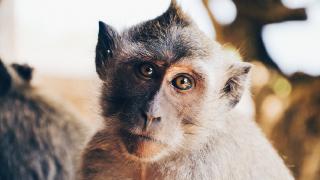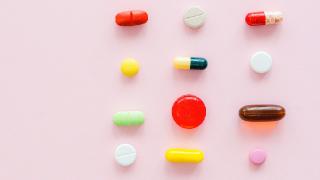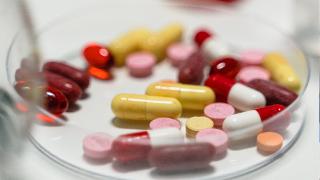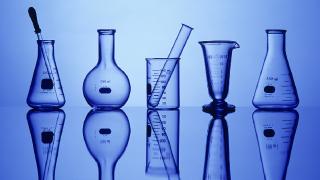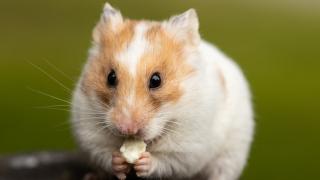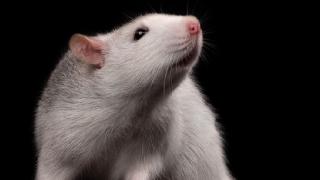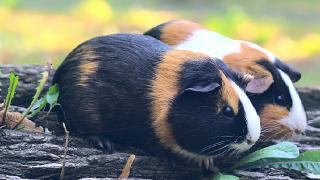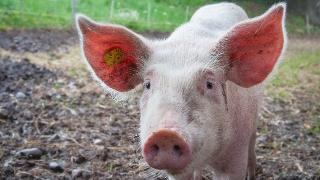Scientific Publications
The use of non-human primates
Bailey, J. Letter to the Editor (in relation to non human primate research for HIV/AIDS). (2017) Alternatives to Laboratory Animals 45, 213–218., Opens a new window
subtitle: Bailey, J. Letter to the Editor (in relation to non human primate research for HIV/AIDS). (2017) Alternatives to Laboratory Animals 45, 213–218.
In this letter we critique a recent article in Lab Animal journal that claims that macaques should continue to be used for HIV/AIDS research.
Bailey, J. Lessons from chimpanzee-based research on human disease: The implications of genetic differences. (2011). Alternatives to Laboratory Animals, 39: 527-540, Opens a new window
subtitle: Bailey, J. Lessons from chimpanzee-based research on human disease: The implications of genetic differences. (2011). Alternatives to Laboratory Animals, 39: 527-540
The collective effects of the genetic differences between chimpanzees and humans are striking, extensive and have implications for the value of the use of chimpanzees in human medical research.
Bailey, J. An examination of chimpanzee use in human cancer research. (2009). Alternatives to Laboratory Animals, 37: 399-41, Opens a new window
subtitle: Bailey, J. An examination of chimpanzee use in human cancer research. (2009). Alternatives to Laboratory Animals, 37: 399-41
We examine the use of chimpanzees in cancer research and conclude that due to the genetic differences between us and chimpanzees they should not be used.
Bailey, J and Taylor, K. Non-human primates in neuroscience research: The case against its scientific necessity. (2016). Alternatives to Laboratory Animals, 44: 43-69, Opens a new window
subtitle: Bailey, J and Taylor, K. Non-human primates in neuroscience research: The case against its scientific necessity. (2016). Alternatives to Laboratory Animals, 44: 43-69
We review claims by researchers that neurophysiology experiments on monkeys are vital in finding cures for human neurological diseases - and argue that they are actually flawed, of poor relevance to people and there are already alternatives being used.
Bailey, J. An assessment of the use of chimpanzees in hepatitis C research past, present and future: 1. Validity of the chimpanzee model. (2011). Alternatives to Laboratory Animals, 38: 387-418, Opens a new window
subtitle: Bailey, J. An assessment of the use of chimpanzees in hepatitis C research past, present and future: 1. Validity of the chimpanzee model. (2011). Alternatives to Laboratory Animals, 38: 387-418
We look at the scientific and ethical issues surrounding chimpanzee hepatitis C research and argue that their use has contributed little to the field of hepatitis C research and should be abandoned.
Bailey, J and Taylor, K. The SCHER report on non-human primate research – Biased and deeply flawed. (2009). Alternatives to Laboratory Animals, 37: 427-435, Opens a new window
subtitle: Bailey, J and Taylor, K. The SCHER report on non-human primate research – Biased and deeply flawed. (2009). Alternatives to Laboratory Animals, 37: 427-435
We summarise our complaint to the European Ombudsman about the European Commission’s Scientific Committee on Health and Scientific Risks (SCHER) report on the validity of primate research and the alternative methods that could replace it.
Bailey, J. Monkey-based research on human disease: The implications of genetic differences. (2014). Alternatives to Laboratory Animals, 42: 287-317, Opens a new window
subtitle: Bailey, J. Monkey-based research on human disease: The implications of genetic differences. (2014). Alternatives to Laboratory Animals, 42: 287-317
We highlight the key genetic differences between monkeys and humans and argue that the similarities between the two species are superficial and of little benefit for biomedical research.
Bailey, J. An assessment of the use of chimpanzees in hepatitis C research past, present and futures: 2. Alternative replacement methods. (2010). Alternatives to Laboratory Animals, 38: 471-494
subtitle: Bailey, J. An assessment of the use of chimpanzees in hepatitis C research past, present and futures: 2. Alternative replacement methods. (2010). Alternatives to Laboratory Animals, 38: 471-494
We examine the contribution of alternative approaches to hepatitis C research.
The use of animals in drug testing
Bailey J and Pereira S. Advances in neuroscience imply that harmful experiments in dogs are unethical. (2017). Journal of Medical Ethics. Published online first on July 24, 2017 as 10.1136/medethics-2016-103630, Opens a new window
subtitle: Bailey J and Pereira S. Advances in neuroscience imply that harmful experiments in dogs are unethical. (2017). Journal of Medical Ethics. Published online first on July 24, 2017 as 10.1136/medethics-2016-103630
Bailey, J and Balls, M. Recent efforts to elucidate the scientific validity of animal-based drug tests by the pharmaceutical industry, pro-testing lobby groups, and animal welfare organisations. (2019) BMC Medical Ethics 20:16, Opens a new window
subtitle: Bailey, J and Balls, M. Recent efforts to elucidate the scientific validity of animal-based drug tests by the pharmaceutical industry, pro-testing lobby groups, and animal welfare organisations. (2019) BMC Medical Ethics 20:16
A new review looking at whether drug tests on animals help predict human responses. After decades of animal use in human drug development, there is little evidence to support using animals in drug tests, or to suggest that animals can effectively predict how people will react to drugs.
Bailey, J, Thew, M. and Balls, M. An analysis of the use of animal models in predicting human toxicology and drug safety. (2014). Alternatives to Laboratory Animals, 42: 181-199, Opens a new window
subtitle: Bailey, J, Thew, M. and Balls, M. An analysis of the use of animal models in predicting human toxicology and drug safety. (2014). Alternatives to Laboratory Animals, 42: 181-199
This comprehensive analysis shows testing drugs in animals fails to contribute evidential weight concerning the safety of new drugs in humans.
Taylor, K, Gericke, C and Rego Alvarez, L. Opinion Article. Botulinum toxin testing on animals is still a Europe-wide issue. (2018) ALTEX. doi:10.14573/altex.1807101, Opens a new window
subtitle: Taylor, K, Gericke, C and Rego Alvarez, L. Opinion Article. Botulinum toxin testing on animals is still a Europe-wide issue. (2018) ALTEX. doi:10.14573/altex.1807101
Bailey, J, Thew, M. and Balls, M. An analysis of the use of dogs in predicting human toxicology and drug safety. (2013). Alternatives to Laboratory Animals, 41: 335-350, Opens a new window
subtitle: Bailey, J, Thew, M. and Balls, M. An analysis of the use of dogs in predicting human toxicology and drug safety. (2013). Alternatives to Laboratory Animals, 41: 335-350
A re-analysis of past research using dogs shows that the absence of toxicity in dogs provides virtually no evidence that adverse drug reactions will also be absent in humans, significantly weakening the scientific justification for their use in human drug safety testing.
The use of animals in chemicals testing
Taylor, K and Rego Alvarez, L. Regulatory drivers in the last 20 years towards the use of in silico techniques as replacements to animal testing for cosmetic-related substances. (2020) Computational Toxicology 13, 100112.
This papers discusses the regulatory and scientific drivers that have encouraged the development of computer based (in silico) techniques to replace animal testing for cosmetics. It covers the key legislative and policy changes in Europe, North America and at the OECD over the last 20 years.
Taylor, K, Andrew DJ and Rego, L. The added value of the 90-day repeated dose oral toxicity test for industrial chemicals with a low (sub)acute toxicity profile in high quality dataset. (2014). Regulatory Toxicology and Pharmacology, 69: 320-332, Opens a new window
subtitle: Taylor, K, Andrew DJ and Rego, L. The added value of the 90-day repeated dose oral toxicity test for industrial chemicals with a low (sub)acute toxicity profile in high quality dataset. (2014). Regulatory Toxicology and Pharmacology, 69: 320-332
We demonstrate the redundancy of a specific animal test within a package of tests that are commonly conducted for regulatory purposes for industrial chemicals.
Taylor, K. Ten Years of REACH — An Animal Protection Perspective (2018) ATLA 46, 347–373., Opens a new window
subtitle: Taylor, K. Ten Years of REACH — An Animal Protection Perspective (2018) ATLA 46, 347–373.
An in depth review of our activity over the last 10 years to reduce the impact of the EU’s REACH chemicals legislation on animals used in testing. Concludes that over 2.2 million animals have already been used and highlights where the Commission, Member States and the Agency could do more to avoid animal testing.
Taylor K, Stengel W, Casalegno C, and Andrew DJ. Food for thought…Experiences of the REACH testing proposals system to reduce animal testing. (2014). ALTEX, 31: 107-128, Opens a new window
subtitle: Taylor K, Stengel W, Casalegno C, and Andrew DJ. Food for thought…Experiences of the REACH testing proposals system to reduce animal testing. (2014). ALTEX, 31: 107-128
A review of our experiences with the testing proposal system under EU chemicals legislation, REACH. This is a system put in place to prevent additional animal testing by allowing third parties to comment on each proposed new test.
Taylor, K and Andrew A. (2017) The added value of the 90-day repeated dose oral toxicity test for industrial chemicals with a low (sub)acute toxicity profile in a high quality dataset: An update. Regulatory Toxicology and Pharmacology 90, 258-261. Final v, Opens a new window
subtitle: Taylor, K and Andrew A. (2017) The added value of the 90-day repeated dose oral toxicity test for industrial chemicals with a low (sub)acute toxicity profile in a high quality dataset: An update. Regulatory Toxicology and Pharmacology 90, 258-261. Final v
We provide an update on the validity of our approach to waiving the 90 day repeated dose test for chemicals with new data from REACH.
Taylor K, Casalegno C and Stengel W. A critique of the EC’s expert (draft) reports on the status of alternatives for cosmetics testing to meet the 2013 deadline. (2011). ALTEX, 28: 131-148, Opens a new window
subtitle: Taylor K, Casalegno C and Stengel W. A critique of the EC’s expert (draft) reports on the status of alternatives for cosmetics testing to meet the 2013 deadline. (2011). ALTEX, 28: 131-148
We criticise the approach taken by the European Commission to the availability of alternative methods and suggest a way forward by which cosmetics could be safety put on the market without using animals.
Issues in animal testing
Taylor, K and Rego Alvarez, L. (2019) An Estimate of the Number of Animals Used for Scientific Purposes Worldwide in 2015. Alternatives to Laboratory Animals, 47(5-6) 196–213. , Opens a new window
subtitle: Taylor, K and Rego Alvarez, L. (2019) An Estimate of the Number of Animals Used for Scientific Purposes Worldwide in 2015. Alternatives to Laboratory Animals, 47(5-6) 196–213.
We have updated the world’s only evidenced estimate for the number of animals used in scientific research first done in 2005. The global estimate is now 79.9 million animals used in experiments in 2015 ( a 37% increase from 2005) and a total of 192.1 million used for scientific purposes, including those bred as genetically modified and those bred and killed.
Taylor, K. Recent Developments in Alternatives to Animal Testing. Animal Experimentation: Working Towards a Paradigm Change. 24, 585-608.
This chapter discusses the need for alternatives to animal tests, summarises notable developments in the field that have resulted in the replacement of animal use with scientifically and ethically superior methods, and notes important legislative, political and bureaucratic barriers to their greater acceptance and implementation.
Taylor, K, Rego, L and Weber T. Recommendations to Improve the EU Non- Technical Summaries of Animal Experiments (2018) ALTEX 35, 193-210. Plus supplementary table, Opens a new window
subtitle: Taylor, K, Rego, L and Weber T. Recommendations to Improve the EU Non- Technical Summaries of Animal Experiments (2018) ALTEX 35, 193-210. Plus supplementary table
A review of the quality of the non technical summaries produced by EU member states with a particular focus on the UK and Germany.
Taylor, K and Rego, L. EU statistics on animal experiments for 2014. (2016). ALTEX, 33: 465-468, Opens a new window
subtitle: Taylor, K and Rego, L. EU statistics on animal experiments for 2014. (2016). ALTEX, 33: 465-468
The number of animals used in experiments across the EU is now estimated at over 13 million.
Taylor, K. Reporting the implementation of three Rs in European primate and mouse research papers: Are we making progress? (2010). Alternatives to Laboratory Animals, 38: 495-517, Opens a new window
subtitle: Taylor, K. Reporting the implementation of three Rs in European primate and mouse research papers: Are we making progress? (2010). Alternatives to Laboratory Animals, 38: 495-517
This review provides systematic evidence that animal research is still not properly reported and calls on journals to update their policies.
Bailey J. CRISPR-Mediated Gene Editing: Scientific and Ethical Issues. Trends in Biotechnology, 2019; 37(9), 920-921., Opens a new window
subtitle: Bailey J. CRISPR-Mediated Gene Editing: Scientific and Ethical Issues. Trends in Biotechnology, 2019; 37(9), 920-921.
This letter summarises our chapter published in the 2019 book “Animal Experimentation: Working Towards a Paradigm Change”, edited by Kathrin Herrmann and Kimberley Jayne (USA: Brill Human-Animal Studies. ISBN: 978-90-04-39119-2. March 2019). It reviews serious technical issues with the latest method of creating genetically modified animals for research, known as CRISPR, and what these issues mean for the human relevance of experiments involving GM animals, and for the welfare of those animals.
Bailey, J. Genetic Modification of Animals: Scientific and Ethical Issues. (2019). Animal Experimentation: Working Towards a Paradigm Change. 19, 443-478.
This chapter highlights many persistent, serious scientific and ethical issues with the use of GM technology when applied to animals, including the new technology known as ‘CRISPR’. It argues that the harm caused to animals, both intended and unintended (due to the lack of specificity and efficiency involved), as well as the lack of human relevance of GM animals, mean that the creation and breeding of GM animals should not be conducted.
Bowles, E. The Myth of Replacement and the Legal Reality. (2018) Alternatives to Laboratory Animals 46, 39-41, Opens a new window
subtitle: Bowles, E. The Myth of Replacement and the Legal Reality. (2018) Alternatives to Laboratory Animals 46, 39-41
Our legal consultant describes the issues with the EU Directive and the requirement that animal experiments must not be performed if an alternative is available.
Taylor, K. EU member state government contribution to alternative methods. (2014). ALTEX, 31: 215-222, Opens a new window
subtitle: Taylor, K. EU member state government contribution to alternative methods. (2014). ALTEX, 31: 215-222
A review of spending on alternative methods across the EU made by our coalition the ECEAE in 2013.
Taylor, K and Rego Alvarez, L. (2019). A summary of EU national statistical reports of animal experiments in 2014-2016. ALTEX, 36(2): 314-319.
Our analysis of EU national statistical reports of animal experiments in 2014-2016 shows that animal experiments remain at a significant and relatively static level in the EU.
Bailey, J. Does the Stress of Laboratory Life and Experimentation on Animals Adversely Affect Research Data? A Critical Review. (2018). Alternatives to Laboratory Animals 46, 291-305., Opens a new window
subtitle: Bailey, J. Does the Stress of Laboratory Life and Experimentation on Animals Adversely Affect Research Data? A Critical Review. (2018). Alternatives to Laboratory Animals 46, 291-305.
We present substantial evidence that life in the lab for animals is inherently and excessively stressful. This not only has consequences for animal welfare, but also for the reliability and human relevance of experimental results. We challenge those who conduct, fund and approve animal research to take this more seriously, and to address these critical issues.
Bailey, J. Does the Stress Inherent to Laboratory Life and Experimentation on Animals Adversely Affect Research Data? (2017) Alternatives to Laboratory Animals 45, 299-301, Opens a new window
subtitle: Bailey, J. Does the Stress Inherent to Laboratory Life and Experimentation on Animals Adversely Affect Research Data? (2017) Alternatives to Laboratory Animals 45, 299-301
This brief editorial summarises how the stress that animal in laboratories experience is often unavoidable, chronic, and under-appreciated, and how this stress—as well as being a serious ethical issue—has consequences for data reliability and quality, and therefore the validity and human relevance of data from animal experiments.
Taylor, K and Balls, M. Wider recommendations for institutions made in the Brown Report following the BUAV investigation into the use of animals at Imperial College London. (2014). Alternatives to Laboratory Animals, 42: 1-8, Opens a new window
subtitle: Taylor, K and Balls, M. Wider recommendations for institutions made in the Brown Report following the BUAV investigation into the use of animals at Imperial College London. (2014). Alternatives to Laboratory Animals, 42: 1-8
We set out a checklist for animal testing facilities to review their animal care policies following our undercover investigation at Imperial College London.




